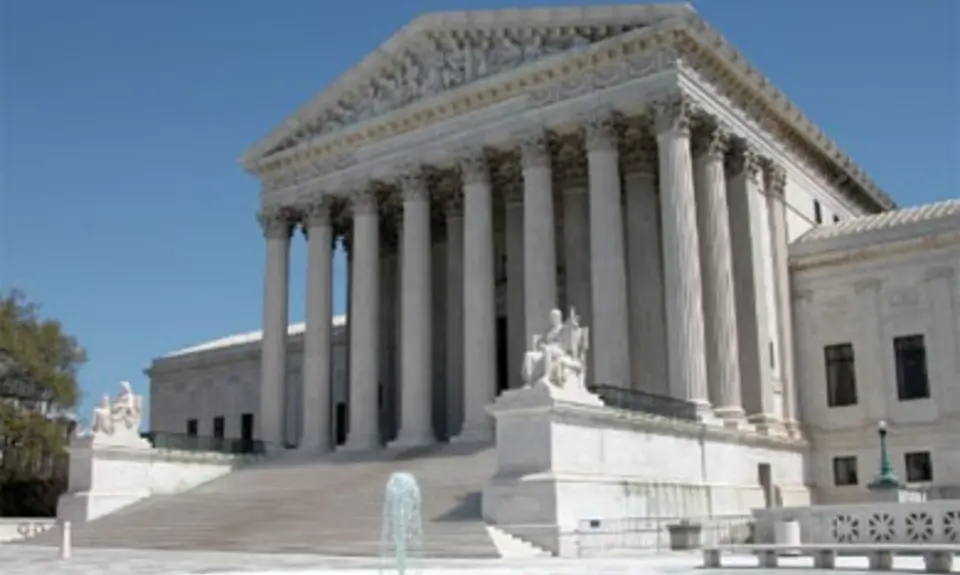To: Interested Parties
From: People For the American Way Foundation, Constitutional Accountability Center
Date: June 2, 2016
Re: Harming Justice: Effects of an Eight-Justice Supreme Court
The Supreme Court is about to embark on the most consequential portion of its Term: handing down decisions on some of the biggest questions facing the country today, questions ranging from immigration to abortion to affirmative action. It will be tackling those questions without a full complement of justices. Justice Antonin Scalia died in February, leaving only eight members on the Supreme Court. Since Justice Scalia’s death, President Obama followed his constitutional duty and duly nominated the highly qualified and impeccably credentialed Judge Merrick Garland to fill the vacancy on the Court. However, conservative Senators have refused to do the jobs the people of their state sent them to Washington to do. The previous four Justices named to the Court waited an average of 74 days from nomination to confirmation; Judge Garland passed that mark on May 28 and has yet to be even given a hearing by the Chairman of the Judiciary Committee Chuck Grassley.
Having only eight Justices on the Supreme Court for a prolonged period of time diminishes the Court, diminishes the country, and diminishes the rule of law. With only eight justices, all too often the Supreme Court cannot do the job the Framers of the Constitution assigned to it.
The diminishing effects of an eight-Justice Court include:
-
A 4-4 divided opinion means that major national questions go unresolved, as an equally divided Court cannot set a binding, uniform, nationwide rule of law. Different federal legal rules can apply to different people and businesses right across state lines. The Court has already handed down a number of 4-4 divided opinions; as of June 1, 2016, there are still 25 cases awaiting decision by the Court.
- For instance, the Supreme Court has already divided 4-4 in Hawkins v. Community Bank of Raymore. Now one set of rules about whether spouses are required to guarantee loans applies in some jurisdictions, and another set in others.
- The Justices themselves have repeatedly made clear that providing a uniform rule of law is one of the most important functions of the Supreme Court. From Chief Justice Roberts to Justice Ruth Bader Ginsburg, the members of the Court have consistently affirmed this principle.
- Some of the biggest, most important questions are frequently the most divisive and have the greatest potential to divide the Justices 4-4, especially at a time when the number of 5-4 splits is at an historic high.
-
In order to avoid a 4-4 split, the Supreme Court has already had to make unusual moves, punting on important legal questions because there is not a fully-staffed bench that can resolve these questions. Thus, even when the Court doesn’t split 4-4, it may still be unable to truly resolve the important questions before it, thus leaving legal uncertainty in place.
- Rather than issue an opinion on the merits, the Supreme Court issued an unsigned order in Zubik v. Burwell, a case involving the accommodation granted to religious nonprofits that object to the ACA’s contraceptive mandate. The order vacated the decisions of the lower courts and remanded the issue back to the lower courts to try to achieve a compromise, thus leaving the central question unresolved, thousands of women around the country in limbo, and a strong possibility that the Court will have to revisit the question again once it is fully staffed. Given the time it takes for issues to work their way through the federal courts, it could be years before the issue is resolved.
- The Supreme Court may also be less inclined to tackle tough questions in the first place if its members think they cannot avoid dividing 4-4 on a question. The Court already has a small docket, only hearing approximately 70-80 cases a Term; the pace of grants of review in cases the Court has decided to hear for next Term is well below the average for this point in the year.
The effects of an eight-Justice Court ripple far outside of Washington, DC. Millions of American lives are impacted by the decisions the Court makes – or doesn’t make. The sooner Senators set aside partisanship in favor of doing their jobs, the better off the Court and the country will be. For more information on the effects of an eight-member Court, please see the report Material Harm to Our Justice System: The Consequences of an Eight-Member Supreme Court.
Resources
Material Harm to Our Justice System: The Consequences of an Eight-Member Supreme Court
Everything You Need to Know About an Eight Justice Supreme Court
The Originalist Case for the Senate to Do Its Job
The Supreme Court’s Role in Our Constitutional Scheme: Why Eight is Not Enough
Justice Waits for a Nine Member Supreme Court
Ruth Bader Ginsburg: 8 Is Not a Good Number
###
